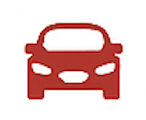Understanding the Rich and Evolving Car Culture in the Philippines
The Historical Roots of Car Ownership in the Philippines
The car culture in the Philippines has its roots in the early 20th century, when the country was under American colonial rule. During this time, motor vehicles became symbols of modernity and progress. Wealthy Filipino families and American officials were the first to own cars, often imported from the United States. Roads in Manila and nearby provinces were gradually improved to accommodate these new modes of transportation.
In the post-World War II era, car ownership began to rise as the Philippine economy recovered and manufacturing developed. By the 1950s and 1960s, owning a car became a sign of upward mobility among the growing middle class. Vehicles like the Ford Cortina and Toyota Corona gained popularity, with local assembly operations by multinational automakers further spurring accessibility.
The Jeepney: A Cultural and Automotive Icon
No discussion of Filipino car culture is complete without mentioning the jeepney. Originally adapted from surplus U.S. military jeeps after World War II, jeepneys have become an iconic and uniquely Filipino mode of public transportation. Their colorful designs and extended seating configurations reflect both practical needs and cultural expression. Jeepneys are often decorated with religious icons, pop culture references, and bright, eye-catching artwork.
While jeepneys are primarily public utility vehicles, they hold an important place in the national consciousness. They are celebrated in local art, music, and literature, symbolizing both ingenuity and resilience. Despite efforts to phase out older units due to environmental concerns, modernized jeepneys are being introduced, aiming to preserve the cultural value while improving safety and emissions standards.
The ongoing jeepney modernization program has sparked debates about heritage preservation, livelihood protection, and technological adaptation. Some drivers and operators resist the change due to high costs and limited government support, highlighting the complex socio-economic dimensions of this transformation.
Car Modification and Motorsports in Urban Centers
In urban areas such as Metro Manila, Cebu, and Davao, the car modification scene has developed into a thriving subculture. Car enthusiasts regularly participate in auto shows, club meets, and online forums, showcasing customized rides that range from performance-enhanced sedans to lowered JDM (Japanese Domestic Market) imports. Body kits, engine swaps, and custom paint jobs are common among these vehicles.
Motorsports have also gained traction, with drag racing, autocross, and drifting events held in venues like the Clark International Speedway and Batangas Racing Circuit. Local racing leagues have given rise to professional drivers who sometimes compete in regional events across Southeast Asia. Although financial barriers limit widespread participation, motorsports remain a source of aspiration and excitement for many young Filipinos.
Social media has played a pivotal role in the spread of automotive trends. Facebook groups and YouTube channels dedicated to Filipino car culture have amassed large followings, connecting car lovers across islands and regions. Influencers in the scene often document their build projects, share advice, and review parts, creating a community-driven ecosystem of learning and appreciation.
Challenges of Car Ownership in the Philippines
Despite the passion for cars, owning a vehicle in the Philippines comes with challenges. Traffic congestion in urban centers is among the worst in the world, particularly in Metro Manila. Commuters can spend several hours a day on the road, with bottlenecks exacerbated by inadequate infrastructure and a lack of effective traffic enforcement.
High vehicle taxes, fuel costs, and import duties also pose financial hurdles. The Philippines imposes significant tariffs on foreign-made vehicles, making cars more expensive compared to neighboring countries. Moreover, regular maintenance is a concern due to the quality of roads and susceptibility to flooding in certain areas, especially during the rainy season.
Parking is another persistent issue, with limited space in both residential and commercial areas. Many car owners must pay monthly for off-street parking or rely on limited roadside spots, which are often subject to local regulations and fees. These factors contribute to a nuanced and sometimes frustrating ownership experience.
The Role of Cars in Regional and Rural Areas
Outside major cities, the role of cars shifts toward utility and necessity. In provinces with limited public transportation options, owning a car or utility vehicle becomes essential for daily activities like going to markets, transporting goods, or accessing healthcare. In agricultural areas, pickups and small vans are especially valued for their cargo capacity and versatility.
While some rural residents drive older, secondhand vehicles imported from Japan or Korea, others rely on local dealerships offering financing plans. The used car market is robust, providing relatively affordable options for families and small businesses. Roads in these regions vary in quality, which influences vehicle choices toward more rugged, higher-clearance options.
Car ownership in rural settings is often closely tied to family needs and economic activity. Vehicles are shared among extended families or used as part of livelihood strategies, such as mobile stores or shuttle services. In some regions, local governments offer support programs to help residents purchase transport for work-related purposes.
Future Trends: Electrification and Sustainable Mobility
The Philippine automotive market is slowly embracing electric vehicles (EVs) and hybrid cars. While adoption has been slower than in more developed economies, the government has implemented incentives such as reduced import duties and tax exemptions to encourage the shift toward cleaner mobility. Local companies are also exploring the development of e-jeepneys and e-tricycles for public transport.
Charging infrastructure remains limited but is gradually expanding, particularly in Metro Manila. Private sector investments are helping build the foundation for broader EV usage. Meanwhile, ride-hailing services and car-sharing platforms are introducing Filipinos to alternative mobility options, helping reduce the dependence on individual car ownership in congested cities.
Public perception of EVs is evolving, with growing awareness of environmental issues and long-term savings on fuel and maintenance. While affordability remains a barrier, experts believe that continued policy support and technological improvements will pave the way for more sustainable car culture in the country over the next decade.
